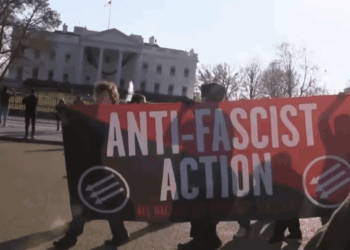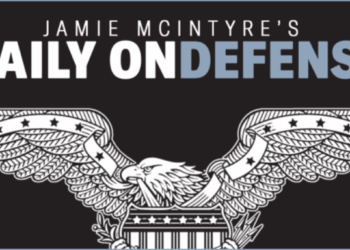
Order Michael Finch’s new book, A Time to Stand: HERE. Prof. Jason Hill calls it “an aesthetic and political tour de force.”
Sign up to attend Michael’s talk in Los Angeles on Thursday, November 20: HERE.
An Arab journalist now based in Morocco, Amine Ayoub, has the unsettling habit of speaking the truth. That is why, though appreciated in the West, he remains largely unknown to the Arab public. Now he has delivered a judgment on the state of play in Gaza, which can be found here: “Gaza’s Implosion: Israel was right all along,” by Amine Ayoub, Israel National News, October 15, 2025:
Gaza is collapsing under the weight of its own contradictions. Just days after Israeli troops withdrew from key areas, fierce fighting broke out between Hamas forces and the Dughmush clan, one of Gaza’s most powerful armed families. Gunfire rattled through the streets of Gaza City as civilians fled and Hamas fighters hunted their rivals house by house. Officials tried to play it down, calling it a mere “revenge incident.” It isn’t. It’s the beginning of Gaza turning in on itself.
What the world is witnessing is not a new war, but the slow-motion implosion of a failed political project. Hamas built its rule on terror and intimidation, not governance. It created a society where power came from the gun, not the ballot box. Now those same guns are being turned inward. For seventeen years, Hamas promised to liberate “Palestine.” Instead, it has enslaved Gaza.
The current violence exposes the truth that many in the West still refuse to face. Hamas was never a governing movement. It was a militia masquerading as one. It taxed and tortured, smuggled and extorted. It built tunnels and rockets instead of roads and hospitals. It maintained power through fear and propaganda, while using Gaza’s population as human shields and bargaining chips….
Hamas is a terrorist army, that before the Gaza War consisted of 30,000-40,000 combatants. It did not govern in any traditional way. It was a dictatorship, which was more concerned with attacking the Zionist enemy than in assuming the responsibilities of rule. Any political dissidents were promptly, and violently, dealt with. Hamas either stole the humanitarian aid that flowed in for the general population of Gaza to be distributed to its members, or sold it, at exorbitant prices, to those Gazans who were meant to receive it for free. The four senior leaders of Hamas — Khaled Meshaal, Ismail Haniya, Mousa Abu Marzouk, and Yahya Sinwar — between them made off with $14 billion.
Hamas was not much interested in governance. Instead of constructing housing, roads, schools, and hospitals, it chose to spend billions of dollars of aid money on a vast network, some 450 miles long, of deep-delved tunnels, where Hamas could hide its combatants and their weapons. Gaza was not a government with an army, but an army with an insignificant government.
Hamas was never going to spend time learning how to effectively rule. It has always been a fighting force. Because of the ceasefire that has mostly been observed (Hamas did kill two IDF officers; Israel responded with more than a dozen deadly airstrikes; Hamas, properly chastened, did not try again to fire on Israeli soldiers), it has instead started to fight the powerful clans that have long opposed its rule. In some cities, its operatives have prevailed; in others, the clans have successfully fought back. That is Gaza today: peace in the area behind the yellow line, that the IDF controls, and internecine warfare where Hamas still holds sway and is trying to wipe out all of its potential rivals for power.
The administration — President Trump, Vice President Vance, Secretary of State Rubio — have reiterated that Hamas must give up its weapons. That is the sine qua non for any further movements, including allowing Hamas combatants to leave the Strip and find refuge elsewhere, most likely in Turkey or Qatar.
Let the clans do as much damage as they can, each in its own bailiwick — Rafah, Khan Yunis, and Gaza City — to their common oppressor and enemy, Hamas. But once the bloodletting has gone on for a few more months, weakening both sides, Hamas leaders may finally realize it is time for them to cut and run, which means to surrender their weapons in exchange for safe passage out of Gaza to the only countries likely to take them in — Turkey and Qatar. Such a defeat should curb the enthusiasm for more fighting even by the ever-diminishing number of fanatics.
















